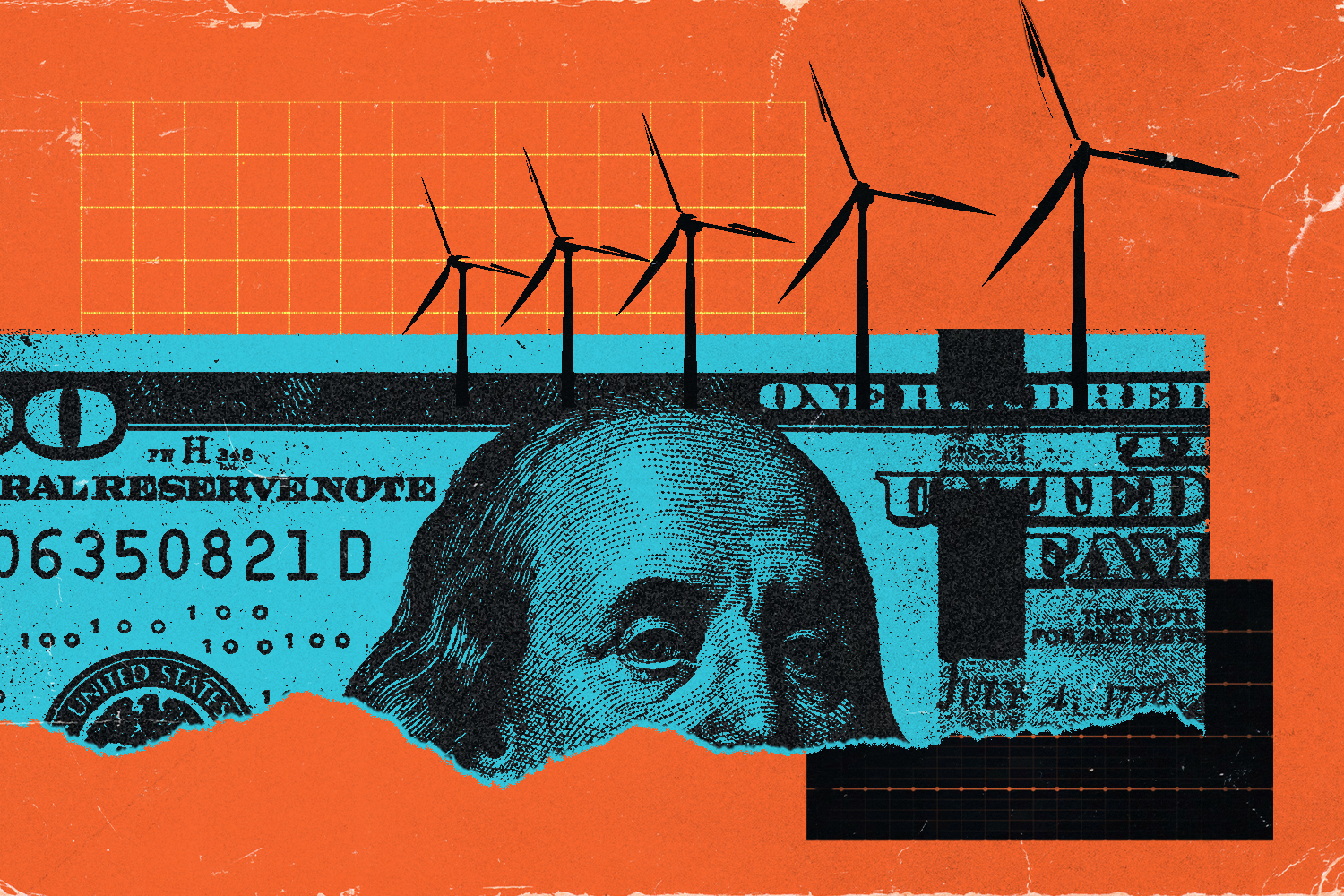Hey team, and welcome back to one5c! We’ve got two helpings of goodness for the waste-conscious among us this morning. The first is our pick for the best silicone baking mat—aka the thing that will help cooks and bakers bHey team, and welcome back to one5c! We don’t talk about money a ton ‘’round here, because everyone’s financial situation is different. But here’s the thing: Doing what’s best for the planet is almost always what’s best for the bottom line—even if it takes some time for the balance sheet to get into the, er, green. That applies to heat pumps, product packaging, and even big investments in mitigation and adaptation. Let’s discuss… —Corinne
WHAT WE’RE INTO THIS WEEK
By Audrey Chan

Consume this
‘Water lentils’ could fuel our diets and lives
Duckweed—best known as that green algae on pond surfaces—could be the next superfood. A longtime market staple in many Southeast Asian countries, Lemna (also called water lentils) was recently approved as edible by the European Food Safety Authority. Water lentils are highly nutritious: They’re composed of up to 40% protein, 35% carbohydrates, and 20% minerals and have a taste that’s like a nutty sort of spinach. The plant also requires no pesticides and little fertilizer, and grows so quickly that it can be ready to harvest up to twice a week. Plus, duckweed can thrive in shallow trays of water in small spaces––meaning it could be raised in cities. Another bonus: Scientists from the Cold Spring Harbor Laboratory recently found that some species have wide-open pores, making them a potentially useful tool for carbon capture.
Report card
Corporate America goes quiet on climate
Boardrooms across America aren’t talking about climate like they used to. Bloomberg Green recently analyzed transcripts of S&P 500 company earnings calls dating back to 2020 to track key terms like climate change, ESG, and green energy. They found that companies are talking about the environment 76% less than they were three years ago, when climate chatter was at its peak. This trend, called “greenhushing,” is happening across industries: Giants Citigroup and Goldman Sachs pulled out of a global finance pact meant to help lenders reduce their carbon footprints, and Walmart said it would likely miss its 2025 and 2030 emissions targets. For many executives, “the climate story needs to disappear” in the current political environment, Hortense Bioy, head of sustainable investing research at Morningstar Inc., told Bloomberg. Despite the silence, the majority of corporate finance chiefs surveyed by Kearney last year did say they wanted to increase green investments and expected sustainability initiatives to yield higher returns.
Waste not
A tool to help spot sustainable packaging
In 2022, activists from U.K. group Just Stop Oil threw tomato soup all over Vincent van Gogh’s famous Sunflowers painting at the National Gallery in London. The work of art remained unharmed behind a protective glass casing, butFood packaging is everywhere: It makes up half of all fossil fuel–based plastics and leaves behind a messy supply chain trail of climate effects. Picking the best, most waste-conscious foodware, though, is not so simple. Enter the Understanding Packaging Scorecard, a free tool that helps consumers and companies compare the impacts of various vessels. Developed by a group that includes the Environmental Defense Fund and the Food Packaging Forum Foundation’s Single-Use Material Decelerator (SUM’D), the scorecard assesses packaging on six factors: water use, recoverability, plastic pollution, sourcing, climate impact, and chemicals of concern. In a comparison of coffee containers, for example, ceramic mugs top the list while expanded polystyrene cups bring up the rear. To put the environmental costs of such decisions in context, the tool also benchmarks choices against “Ecoville,” a fictional sustainable city.
Built environment
Heat pumps are about to get even better
By transferring warmth from outside to inside (or vice versa in the summer), heat pumps offer an energy-efficient way to climate-control homes. But to do that, they rely on refrigerants. One common one, R-410A, comes with a tricky bit of irony: If it leaks, it’s a greenhouse gas that’s more than 2,000 times stronger than CO2. These leaks can happen during installation, use, and even when a heat pump is thrown out, which is why this year, the EPA is capping how much refrigerants in heat pumps can potentially warm the planet. In response, manufacturers are rolling out alternatives like R-454B and R-32, which are considerably less harmful. Still, “even if we lost all the refrigerant, it still actually has a much smaller effect just having a heat pump and not burning gas,” Matthew Knoll, co-founder and chief technology officer at Quilt, which builds heat pump systems, tells Grist.
MIC-DROP CLIMATE STAT
4 bil. kWh
The energy saved if every consumer bought just one secondhand garment instead of a new one, according to ThredUp. (That’s more energy than 200,000+ homes use in a year.) Another upside? Preloved goods aren’t hit by tariffs. Check out our guide to finding a diamond in your local thrift shop.
BUILT ENVIRONMENT
We may have been shorting climate costs
By Tyler Santora

Projections about the economic impacts of human-caused climate change have mostly implied that the repercussions of even worst-case global warming scenarios would be manageable—particularly when you factor in advances in renewable energy and carbon sequestration. But in a new study in the journal Environmental Research Letters, scientists propose that previous models ignored a crucial climate variable, causing them to underestimate just how much damage a warming world could do to the economy. Prior calculations found that low-income countries took most of the economic hit, giving high-polluting countries less incentive to cut emissions, but these new findings demonstrate just how universal the costs could be.
Their findings are important because they stand as a rebuke to the notion that the costs of investing in technologies and other measures to curb warming outweigh the benefits. Crucially, the data also brings economic models more in line with predictions from the world’s climate scientists, which is hugely important for guiding policy around decarbonization.
What’s different about this model
Models that predict how much climate change will impact the economy typically focus on how weather in individual countries will affect those countries’ GDP (aka the total value of the goods and services they produce). But in reality, weather raining down upon one stretch of land doesn’t affect a nation in isolation. The global economy is interconnected. For example, if today’s South America faced a drought that slashed their crop production, they could import food from places getting good rainfall to avoid inflation spikes. But if multiple parts of the world are facing a drought, as is increasingly likely with climate change, other regions may not be able to help out, causing food prices to spike in South America.
To determine just how much these ripple effects change predictions, the researchers reevaluated three existing models for impacts of severe climate change (more than 3 degrees C by 2100). Across all three scenarios, the updated estimates were bleak: The analysis predicted median GDP losses of −19%, −40%, or −86%, which are around four times more drastic than previous estimates. For context, during the Great Depression the U.S. GDP fell 30% between 1929 and 1933.
To take it a step further, the researchers also compared those drops with the costs of mitigation. They plugged their estimated losses into a model that calculates how much and how quickly the world needs to reduce emissions to balance the costs of emission reductions with the monetary costs of climate change damage. In doing so, the authors found that the world must cut emissions further and faster than previously estimated—enough to change the recommended warming limit for optimizing the economy from 2.7 degrees C to 1.7 degrees C. These adjusted recommendations are much more in line with policy action advocated for by climate scientists than previous economic counsel.
From macro to micro
Although the study looks at the country-level effects of climate change, shifts in GDP have major effects on the everyday person. When GDP is growing, the average standard of living increases. When GDP falls, the opposite occurs and unemployment rises. The study authors predict that if extreme weather across multiple countries hits at the same time, the global ability to produce certain goods like crops could decrease, driving inflation.
On the other hand, a government that realizes taking swift action to mitigate climate change is in its own best financial interest will promote policies that may also benefit the little guy. These could include, for instance, subsidies on electric vehicles, home solar power, and more, which countries like Sweden and Norway are leading the way on.
